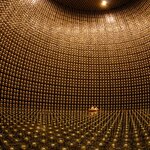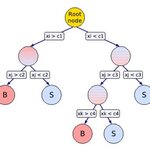Physics
With a slightly anti-climatic timing if we consider the just ended orgy of new results presented at winter conferences in particle physics (which I touched on here), the LHCb collaboration outed today the results of a measurement of unity, drawing attention on the fact that unity was found to be not equal to 1.0.I have been supportive, even enthusiastic at times, of the recent LHCb measurements - in general I like the business of this small collaboration (well, small, you know - I'm comparing with ATLAS and CMS) which plays the part of the David compared not with one but with two angry…

On Neutrino CP-Violation Idea
Primarysuggestive qualitative ideas are especially important in basic frontierphysics. As examples, Einstein’s thought experiment on space-time connection inspecial relativity, equivalence principle in General relativity and others.
Themodern Standard Model is in need of a reliable flavor theory with CP-violation.An appropriate suggestive qualitative idea for CP-violating flavor degree offreedom is welcome. It seems that such idea exists, it can be outlined here.
In theSM, there is a universal leading by data bimaximalapproximation for all Dirac elementary…

Snow is melting in the Alps, and particle physicists, who have flocked to La Thuile for exciting ski conferences in the past weeks, are now back to their usual occupations. The pressure of the deadline is over: results have been finalized and approved, preliminary conference notes have been submitted, talks have been given. The period starting now, the one immediately following presentation of new results, when the next deadline (summer conferences!) is still far away, is more productive in terms of real thought and new ideas. Hopefully we'll come up with some new way to probe the standard…

The XVII edition of the “Neutrino Telescopes” conference closed its works yesterday after a lively debate on the future of the neutrino physics program in Europe. I followed the works and published in the conference blog over 60 articles summarizing the presentations, which ranged from descriptions of the status of construction of new detectors, to hot new results, to cosmology discussions, to theoretical overviews, to poster contents. You are welcome to visit the site here. Don't forget to scroll down - as I said, there are over 60 new entries since the second week of March.
Here I would…

While I was busy reporting the talks at the "Neutrino Telescope" conference in Venice, LHCb released a startling new result, which I have not much time to describe in much detail this evening (it's Friday evening here in Italy and I'm going to call the week off), and yet wish to share with you as soon as possible.The spectroscopy of low- and intermediate-mass hadrons (whatever this means) is a complex topic which either enthuses particle physicists or bores them to death. There are two reasons for this dycothomic behaviour.
On one hand, the fact that new hadron resonances may appear out…

This is to mention several interesting articles summarizing the presentations given today at the Neutrino Telescopes conference in Venice:- Gravitational Waves: a New Era in Astrophysics Has Begun- A Neutrino Platform- Overview of the DUNE Experiment- Poster summary: Neutrino masses and ordering via multimessenger astronomy- HyperKamiokande- Poster Summary: Double Calorimetry System of the JUNO Experiment- Theory and Phenomenology of Leptonic CP Violation- Phenomenology of Three-Neutrino Masses and Mixings- Status of Super-Kamiokande- Results from NOvA- Results and Perspectives of T2K-…

The first day of the Neutrino Telescopes XVII conference in Venice is over, and I would like to point you to some short summaries that I published for the conference blog, at http://neutel11.wordpress.com. Specifically:
- a summary of the talk on Super-Kamiokande- a summary of the talk on SNO- a summary of the talk on KamLAND- a summary of the talk on K2K and T2K- a summary of the talk on Daya Bay
You might have noticed that the above experiments were recipients of the 2016 Breakthrough prize in physics. In fact, the session was specifically focusing on these experiments for that reason…

Elementary particles are mysterious and unfathomable, and it takes giant accelerators and incredibly complex devices to study them. In the last 100 years we have made great strides in the investigations of the properties of quarks, leptons, and vector bosons, but I would lie if I said we know half of what we would like to. In science, the opening of a door reveals others, closed by more complicated locks - and no clearer example of this is the investigation of subatomic matter. I can make an example of why our knowledge is still really limited. We know that protons and neutrons are made…

The arXiv.org (said as archive) is one of the oldest websites on the internet and
serves as a curated collection of scholarly preprints submitted by recognized
scientist. I even have a paper there on
massive star formation (arXiv:1311.3983).
I tried to publish in another area and they say submit to a journal and
get feedback. Then a favorable review
isn’t enough, so I need to get it published.
Then in a subsequent email from
them, I must get it published in a “mainstream journal” with no guarantee that
being published in any journal would do the trick.
(This…

Decision trees are one of the many players in the booming field of supervised machine learning. They can be used to classify elements into two or more classes, depending on their characteristics. Their interest in particle physics applications is large, as we always need to try and decide on a statistical basis what kind of physics process originated the particle collision we see in our detector.In a decision tree with a binary output (two classes), the various characteristics of the elements (features) in a training set are considered in succession, finding a way to decide whether an element…